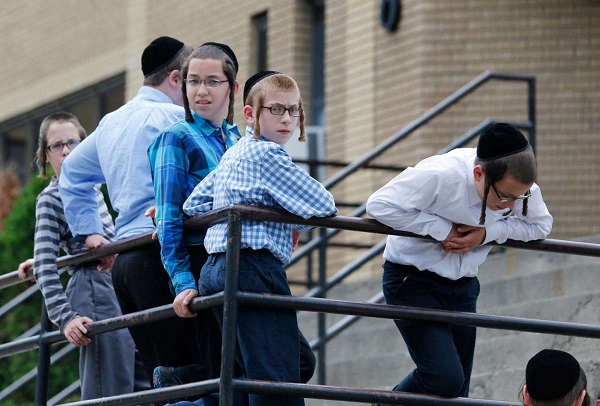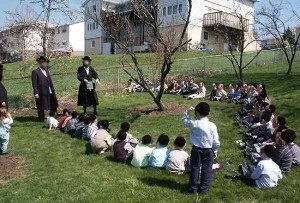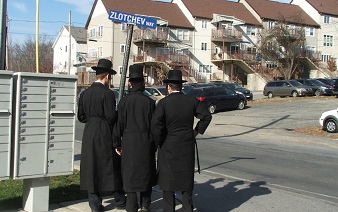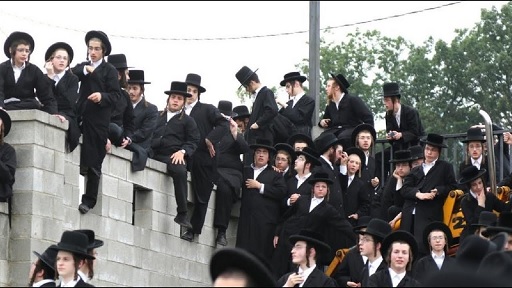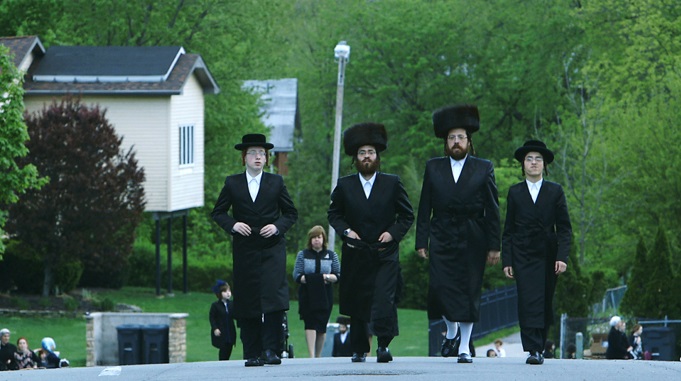You’ve probably heard that I’m working on a follow-up to “Have To” History: Landmark Supreme Court Cases because I mention it every chance I get and won’t talk about anything else so why aren’t more of you buying my book do you hate truth and America? Along the way, I’m posting rough drafts and ramblings that may or may not make it into the final version (working title: “It Followed Her To School One Day…”)
The following is a case that started off as a one-page insert but keeps trying to grow beyond its word count. We’ll see how that goes.
FOLLOW UP: The “final” version of this post (the one that ended up in the book) can be found here.
Worth A Look: Elk Grove Unified School District v. Newdow (2004)
The command to guard jealously and exercise rarely our power to make constitutional pronouncements requires strictest adherence when matters of great national significance are at stake. Even in cases concededly within our jurisdiction under Article III, we abide by a series of rules under which we have avoided passing upon a large part of all the constitutional questions pressed upon us for decision… Always we must balance the heavy obligation to exercise jurisdiction… against the deeply rooted commitment not to pass on questions of constitutionality unless adjudication of the constitutional issue is necessary…
Consistent with these principles… {a} plaintiff must show that the conduct of which he complains has caused him to suffer an “injury in fact” that a favorable judgment will redress… Without such limitations… the courts would be called upon to decide abstract questions of wide public significance even though other governmental institutions may be more competent to address the questions and even though judicial intervention may be unnecessary to protect individual rights…
Thus, while rare instances arise in which it is necessary to answer a substantial federal question that transcends or exists apart from the family law issue, in general it is appropriate for the federal courts to leave delicate issues of domestic relations to the state courts.
(from the majority opinion by Justice John Paul Stevens – internal quotes and citations omitted for clarity)
The Court today erects a novel prudential standing principle in order to avoid reaching the merits of the constitutional claim. I dissent from that ruling. On the merits, I conclude that the Elk Grove Unified School District policy that requires teachers to lead willing students in reciting the Pledge of Allegiance, which includes the words “under God,” does not violate the Establishment Clause of the First Amendment…
Reciting the Pledge, or listening to others recite it, is a patriotic exercise, not a religious one; participants promise fidelity to our flag and our Nation, not to any particular God, faith, or church.
(from the opinion of Chief Justice William Rehnquist, concurring in the judgement)
There are no de minimis violations of the Constitution — no constitutional harms so slight that the courts are obliged to ignore them. Given the values that the Establishment Clause was meant to serve, however, I believe that government can… acknowledge or refer to the divine without offending the Constitution. This category of “ceremonial deism” most clearly encompasses such things as the national motto (“In God We Trust”), religious references in traditional patriotic songs such as The Star-Spangled Banner, and the words with which the Marshal of this Court opens each of its sessions (“God save the United States and this honorable Court”).
These references are not minor trespasses upon the Establishment Clause to which I turn a blind eye. Instead, their history, character, and context prevent them from being constitutional violations at all.
(from the opinion of Justice Sandra Day O’Connor, concurring in the judgement)
Adherence to Lee {v. Weisman (1992) and other precedents established by this Court} would require us to strike down the Pledge policy, which, in most respects, poses more serious difficulties than the prayer at issue in Lee. A prayer at graduation is a one-time event, the graduating students are almost (if not already) adults, and their parents are usually present. By contrast, very young students, removed from the protection of their parents, are exposed to the Pledge each and every day…
I conclude that, as a matter of our precedent, the Pledge policy is unconstitutional. I believe, however, that Lee was wrongly decided. Lee depended on a notion of “coercion” that… has no basis in law or reason…
(from the opinion of Justice Clarence Thomas, concurring in the judgement)
Elk Grove v. Newdow involved an issue the Supreme Court has otherwise tried very hard to avoid: the inclusion of “under God” in the Pledge of Allegiance, at least in terms of its mandatory recitation in classrooms across the nation every school day. The Court had determined in West Virginia v. Barnette (1943) that students could not be required to stand and participate in the Pledge. Far more recently, however, in Lee v. Weisman (1992), the Court found state-sponsored prayer at graduation ceremonies – whether students actively participated or not – to be a violation of the Establishment Clause. By inserting religious dogma, however briefly, into an important educational ritual, the State was coercing students who wished to participate into choosing between silent acquiescence or the potential disruption and embarrassment of some form of overt protest.
Michael Newdow, an eccentric but sincere atheist, was convinced the daily conflation of patriotism with religious belief in his daughter’s elementary school classroom was at least equally inappropriate. He filed suit on behalf of both himself and his daughter, claiming among other things that this was a blatant violation of the Establishment Clause and he didn’t want his child subjected to it any longer.
General, brief references to the Almighty have been a part of innumerable American traditions since long before the First Amendment was an ink spot at the top of James Madison’s parchment. It has thus been difficult at times for the Court to reconcile the proverbial “wall of separation” with a history demonstrating that the authors of the sentiment obviously didn’t mean in everything. Unlike compromises over slavery or state vs. federal power, there’s no evidence the Framers willingly kicked this constitutional can down the road for their scions to sort out. They simply saw no conflict between a reasonable degree of religious acknowledgement in public life while shielding personal faith from the machinery of government.
As the nation has evolved and the concept of “personal belief system” has expanded a bit beyond what could have been envisioned a few short centuries ago, this particular balance has proven trickier than expected. It doesn’t help that the religious majority hasn’t always shown itself to be overly accommodating or sympathetic to anyone outside the chosen few. Self-identifying as a spiritual “other” has often resulted in personal, professional, or physical harm, making governmental choices about even ceremonial prayers or displays a tad more problematic than a First Lady supporting one hockey team over another or the ceremonial naming of highways.
Supreme Court decisions sometimes have explosive potential, unfortunately. It matters what our government validates or who it marginalizes. Maybe it shouldn’t, but… it does.
The Ninth Circuit Court of Appeals agreed with Newdow and declared the use of the Pledge in public schools unconstitutional. Other federal courts had ruled differently in similar cases, setting up the exact sort of confusion that often prompts the Supremes to take up a subject they might otherwise prefer to circumvent. Once the details were officially before them, the majority found they had a very convenient out – Newdow was not the custodial parent of his daughter. While sharing custody in practice, the girl’s mother was the legal guardian and not thrilled with her daughter suddenly being in the headlines (not by name, but still!) for such a controversial reason. Besides, Mom was a church-goer, as was the daughter, and neither wanted to take this particular stand.
Thus the Court’s “aw, shucks!” opinion in which it somehow spun “no way we’re touching this” into “across the ages of jurisprudential magnanimity it has proven prudent for this hallowed body to shunneth the touching of grand slam breakfast issues such as these eggs with so much as the proverbial ten cubit pole.” In other words, the Court would not rule on the constitutional question involved because a majority was unpersuaded Newdow had standing to bring the complaint in the first place.
Technically, they may have been correct. Realistically, there were doubtless a number of relieved sighs. Maybe even cupcakes.
Chief Justice Rehnquist, Justice O’Connor, and Justice Thomas concurred with the result, but not the reasoning. Each submitted a separate opinion suggesting that they’d be more than happy to declare a little patriotic Jesus here and there as perfectly acceptable, because… reasons. (With concurrences like that, who needs dissents?)
Despite the attempted pot-stirring by these three justices, the underlying issue remains foggy and unlikely to reach the Supreme Court again anytime soon. It is thus safe to keep stumbling and mumbling your way through the daily Pledge of Uh, Legions before the roughly 3-second “minute of silence.” Apparently this bit of generally unenthusiastic ceremony is constitutionally safe for now.
RELATED POST: “Have To” History (Thou Shalt Not Post…) – Stone v. Graham (1980)
RELATED POST: A Moment of Silence – Wallace v. Jaffree (1985)

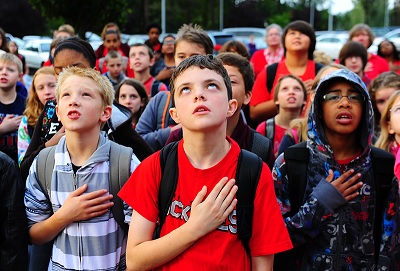
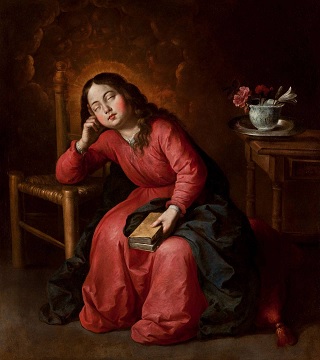 I’m working on a follow-up to
I’m working on a follow-up to 